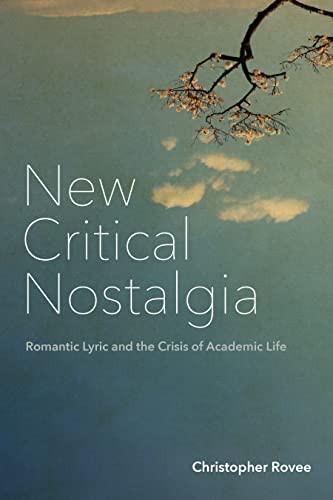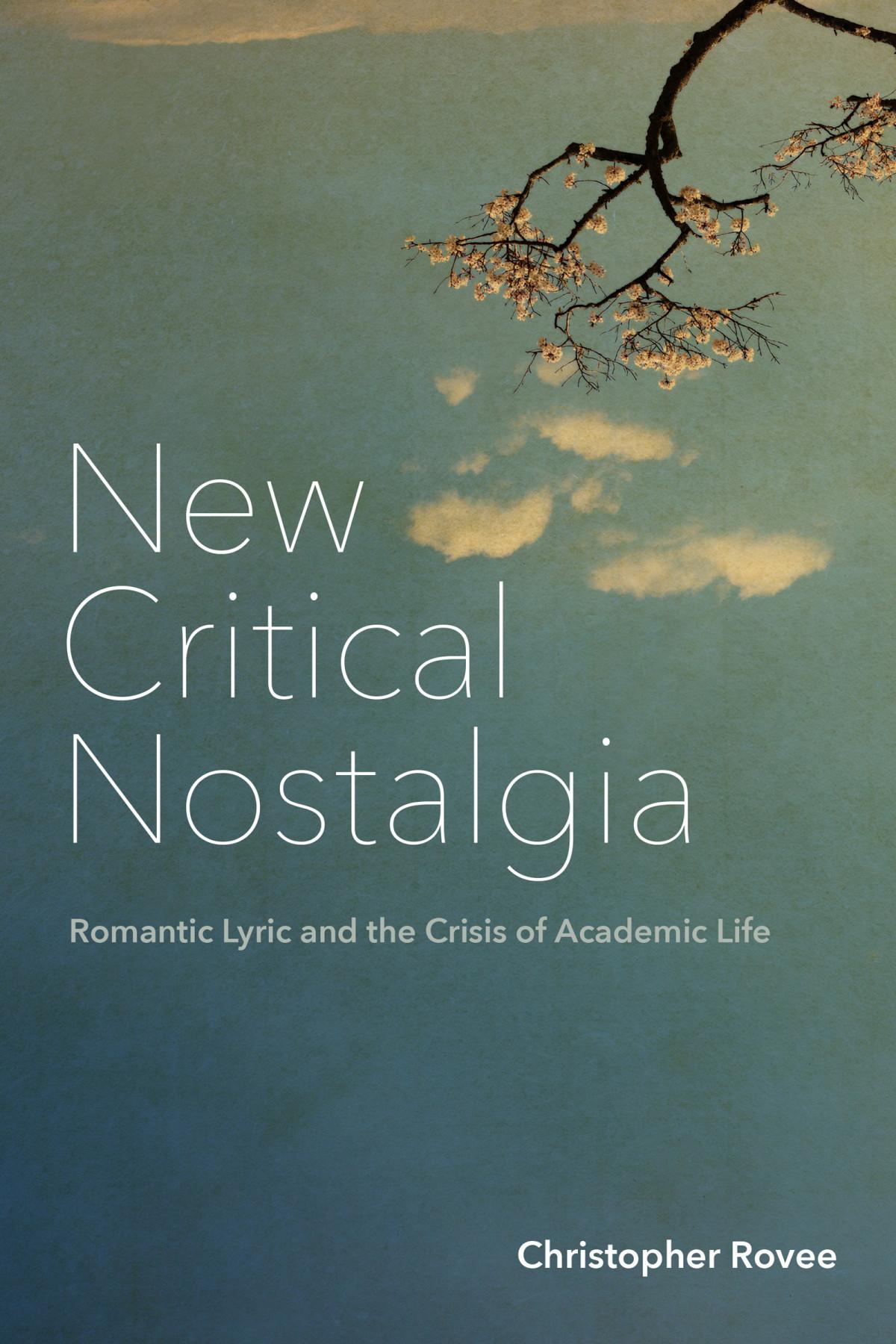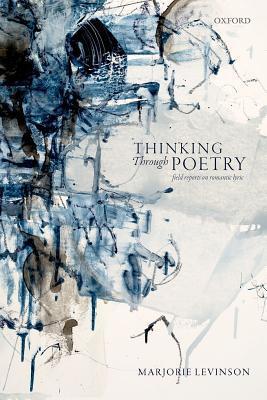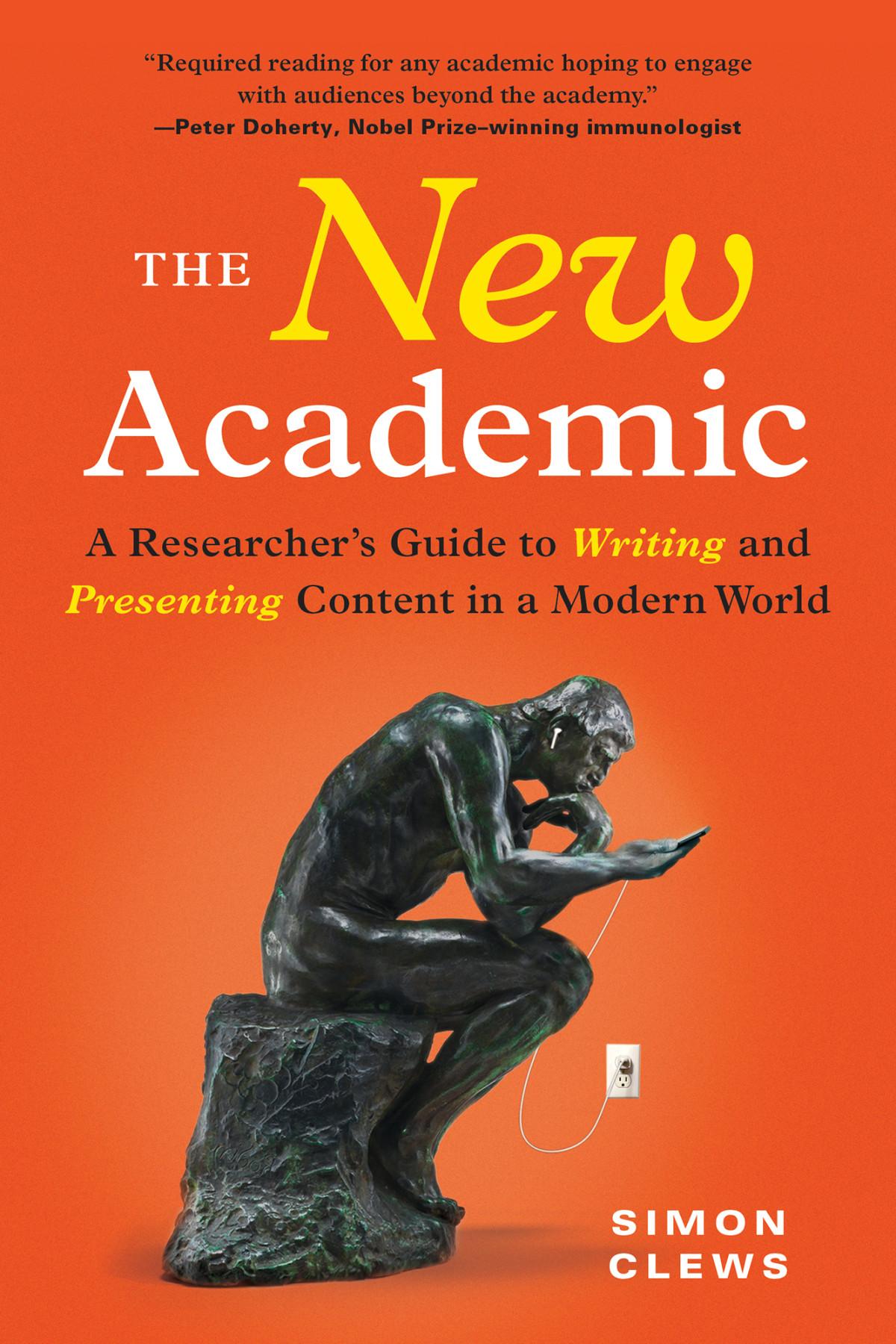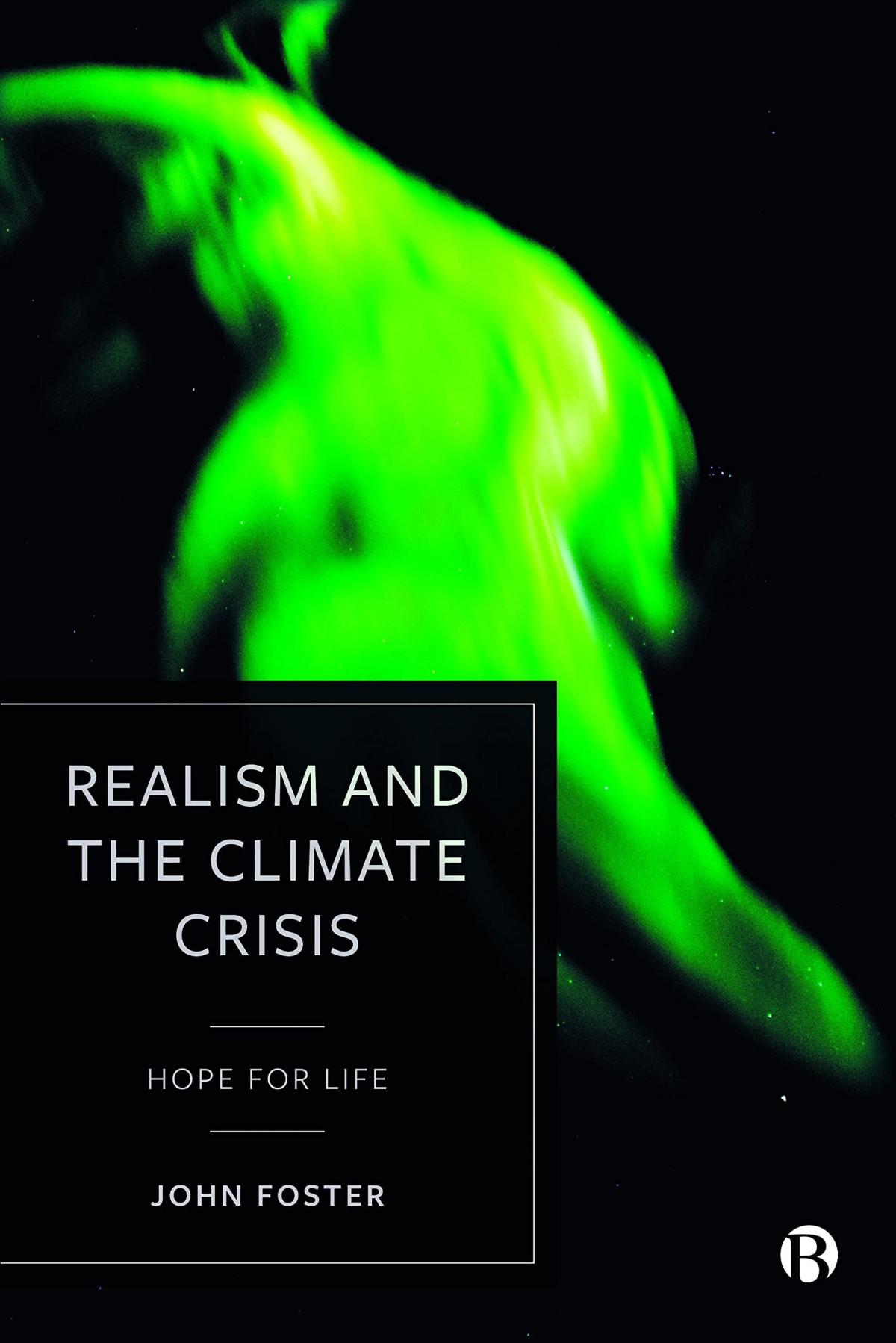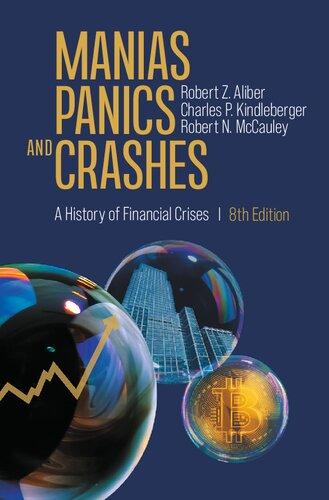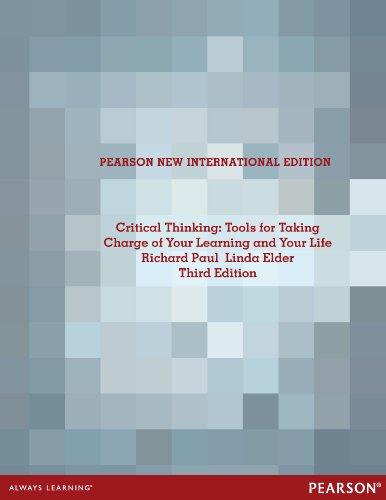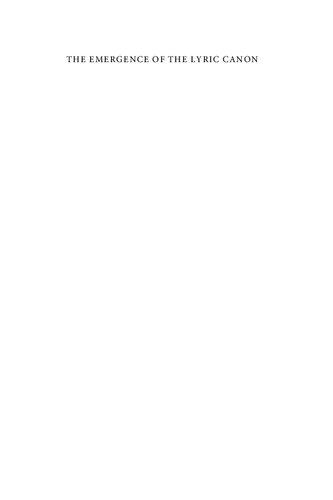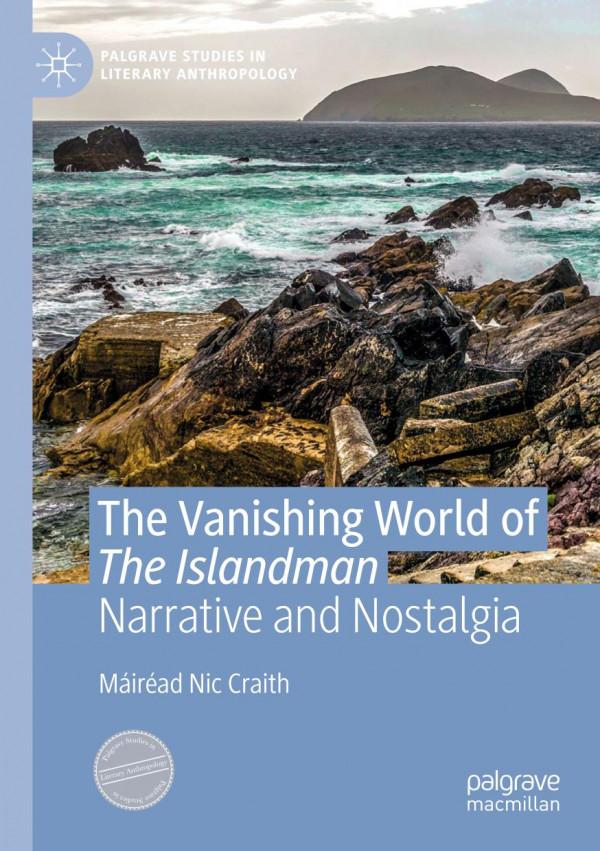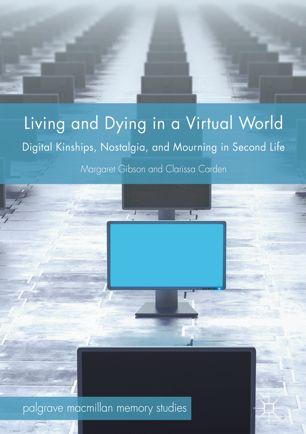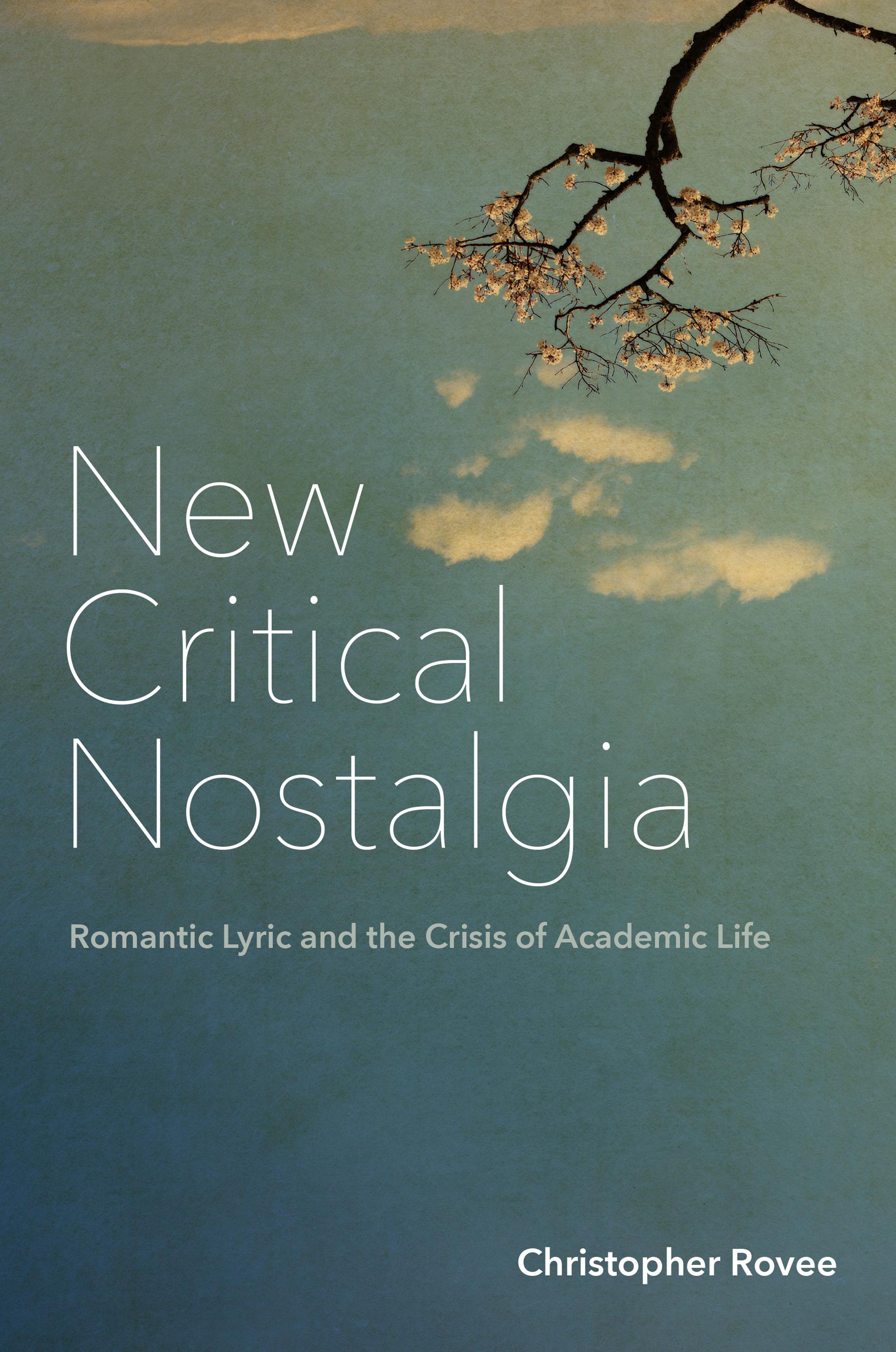Introduction: Our Elegiac Professionalism
A vague sense of loss has long permeated the study of literature.1 Whether explicitly named as a “longing for the lost unities of bygone forms” or merely implied in a wistful terminology that, to cite a typical example, recalls the late 1950s as “the heroic age of Spenser studies,” this nostalgic strain suffuses our disciplinary vocabulary.2 It’s not necessarily a new nostalgia—two wellsprings of modern literary study, philology and New Criticism, were underwritten by it after all—but it’s an intensifying nostalgia, this widespread belief “that something has gone missing” from our work, that “the discipline, as currently configured, is missing something that it once had.”3 The last two decades have seen calls for assorted disciplinary “returns”—to philology, to aesthetics, to the common reader, to the archive, to the classroom, to the text—and the range of practices associated with the twenty- first century’s “method wars” often attest to a similar desire to reclaim something that’s slipped beyond our shared professional grasp.4
This is the elegiac sense conveyed in my book’s title, by which I don’t mean a nostalgia for the New Criticism (though in some cases it manifests that way) but rather a nostalgia for something indeterminate which the New Criticism is regularly identified with, namely the fleeting cohesiveness and relevance that our histories tend to associate with the postwar era of the 1940s and ’50s. Nor do I mean “nostalgia” only in a regressive sense. The term may be shorthand for a false consciousness that basks in dreams of yesteryear (“Nostalgia tells it like it wasn’t,” in David Lowenthal’s much- quoted phrase), but it can also register protest against an unjust present and signal forward- looking engagement with the past. Nostalgia also evokes desires that are endemic to literary study and inextricable from the experiences of dislocation and compulsive mobility that define life in the modern university.5 All of these aspects feature in Edward Said’s mournful (yet deeply political) 1982 observation that “there has been a historical erosion in the role of letters
since the New Criticism”—where Said employs “New Criticism” less to denote a methodology than a lost Eden, in which literature was both the spiritual center of academic life and capable of “interference” in “the everyday world.”6 The image that he summons may be pastoral—the sun casting its light through autumn leaves into the window of a book- lined seminar room, among students in earnest discussion around a heavy wood table—but it is potent. It is the image of a time when literary criticism, the humanities, and the university all seemed on a surer footing vis-à- vis society at large; when it could be taken for granted that the study of books played a role in public life.
The story of this “golden age of robust confidence and prestige” is widely familiar.7 After World War II, we’re told, the humanities took on the responsibility of developing the nation’s leaders, cultivating the values that the United States had defended in the war and stabilizing what the Harvard “Redbook” Committee in 1945 called “a centrifugal culture in extreme need of unifying forces.” In the face of a perennially modern fear “of losing touch with the human past and therefore with each other,” the literature classroom assumed a central place in the national imaginary, uniting a new generation around shared texts and a common cultural heritage.8 “College English” became a near- mythic space of socialization, where adolescent students grew up under the tutelage of a progressive and energized professoriate, honing their close- reading skills within an intimate classroom community whose members attended, all at once, to the same thing. The shared study of books, in this idyllic image, compensated for the disunity seemingly incarnated in the period’s modernized large universities with their newly disparate student bodies. For a tantalizingly brief space of time, while the American university benefited from a massive infusion of state and federal funds for scientific research, its liberal core remained essentially intact, the government’s largesse benefiting what would still be, for a few years longer, a humanities- centered institution.9 This fleeting happenstance made possible an argument which no generation of American academics has been able to make since: that the humanities, as crystallized in the practices of literary study, bore a recognized social value. Our New Critical nostalgia looks longingly toward this transient period when it was possible to articulate and believe in such a claim—a period that is metonymically associated, in the historical imagination, with the close- reading practices of the American New Criticism.
I don’t wish to hypostatize this optimistic view of mid- century literary study. Whether things were this way or not, whether there really is something particular that’s gone missing and is the source of our nostalgia, this is a story that’s taken hold. There are plenty of contemporary anecdotes to support it, and there is just as much contemporary worry, expressed under titles like “Can the Study of Literature Be Revived?,” to counter it.10 There is also, we
know too well, a popular and conservative fixation on this story of literary study’s bygone eminence, fed by a facile media caricature that points to politicization and over- specialization as the reasons for our falling- off . A little more than a decade ago, a characteristic requiem in The American Scholar, titled “The Decline of the English Department,” lamented the replacement of “books themselves” by “a scattered array of secondary considerations (identity studies, abstruse theory, sexuality, film and popular culture).”11 But this fantasy of a simpler, apolitical, and pre- specialized time is of course amnesiac. The 1950s classroom was not some Rousseauvian idyll where students “naturally” gravitated toward imagery and away from politics, and even at the height of New Critical sway, there was no clear consensus about the disciplinary object of literary study; formalist close reading existed and thrived in a vital dialectic with varieties of criticism, historicism, and reception study. As for the supposed salad days of postwar relevance, literary study (and humanistic study in general) has never not struggled for academic and cultural legitimacy. The nineteenth- century Swiss historian Jacob Burckhardt identified crisis as the humanities’ permanent condition, noting the struggle of sixteenth- century “poet- scholars” to explain their social purposes.12 Even if we accept the hypothesis of a postwar boom, it is easy to lose sight of how fragile and fleeting such a moment would have been.
The most obvious sign of interest in an older period’s practices of literary study is the curiosity that has lately been swirling around close reading. No disciplinary concept has made quite so strong a return in recent years, whether in varieties of the new aestheticism, or in the Common Core curriculum, or in the frequency with which critics have weighed the merits of close reading against alternatives ranging from surface reading to distant reading to hyper- reading.13 “Reflecting on how we read has become a metacritical genre unto itself,” writes Elaine Auyoung, and a glance at JSTOR shows that the phrase “close reading” soars in our critical literature after 1995—an admittedly imprecise measure, but one that at least marks a distinct phase in the history of criticism, with close reading more and more at the center of the discipline’s collective thought.14 It is not surprising that interest in a reading practice which approached poems as self- sufficient objects would have revived at the very moment when academia was being forced into economic self- sufficiency (the early 1990s representing, as Mary Poovey notes, a key moment for the public divestment from higher education).15 Since then, there have been repeated attempts to turn up the forgotten origins of this “sacred icon of literary studies.”16 Close reading’s inception has been found in London extension schools and in Skinnerian behaviorism, in British aestheticism and in Southern agrarianism; it’s been sourced to Nashville (home to the Fugitive poets), Baton Rouge (birthplace of Understanding Poetry), Cambridge
(practical criticism), New Haven (Yale- School formalism), Chicago (neoAristotelianism), Paris (explication de texte), St. Petersburg (OPOYAZ). It’s sprung up in so many places that the pursuit has a kind of Whac- A- Mole quality about it—tracked down to one place only to pop up in another.17
This resurgent interest in the origins of close reading is not a sign that close reading has gone missing in itself. It obviously has not. Rather, it is a sign of close reading’s imaginary relation to something that has gone missing: a confidence—underwritten by political culture and enabled by asynchronous funding streams, and thus possible only in the fleeting and contradictory circumstances of the postwar academy—that what happens in college literature classrooms and in the pages of academic periodicals is valued by the culture at large.
Dispensing with the myth of a single point of origination for close reading and the professionalism it instantiates, New Critical Nostalgia instead pursues a period of cultivation, establishment, and dissemination between the 1930s and the 1960s. I put gentle and corrective pressure on the received view of these decades by historicizing the institutional changes and critical exchanges out of which our current practices and predicaments grew. I refract all of this through the prism of the romantic lyric’s reception, an integral but muchcaricatured feature of the disciplinary past. More often talked about than read, New Critical treatments of romanticism have mainly been known by their reputation for hostility. But they are more than this; they are quirky and unpredictable, with a compelling strangeness that derives from the spectacle of America’s most ambivalently nostalgic critics taking on Britain’s most explicitly nostalgic body of literature. In these frequently cathectic engagements with the romantic lyric, the question of nostalgia is overdetermined in ways that would prove consequential for the later development of criticism.
By turning the narrative of romantic studies toward this earlier period of reaction, and away from the presumptive core of romanticism’s disciplinary history—the rehabilitative phase of the 1950s and ’60s and the deconstructive apotheosis of the 1970s—New Critical Nostalgia enables a different perception of the relationship between the field of romantic lyric and the discipline of literary studies. For one thing, it reveals the dislocation of romanticism from its curricular perch in the mid- twentieth century, which is typically seen as a causal feature in the rise of the modern field, as more a rhetorical feature of our professional self- understanding than a fact of disciplinary history. To say so is not to downplay the very real antagonism expressed toward romanticism at the time (an antagonism that the following chapters will amply document), but rather to interrogate its causes and effects. The period’s vaunted antiromanticism is traditionally chalked up to a basic clash of worldviews, as was
summarized even by the MLA’s research guide to romantic studies, published at the end of New Critical hegemony in the early 1970s:
The trouble with the Romantics was [seen by New Critics as] their ability to detect intimations of immortality or to create myths which enabled them to wander in gladness. The New Critics spoke for a generation which was world- weary, materialistic, and skeptical; which regarded the human situation as a hopelessly perplexing existence in a barren, wasted land; and which despised any literature that envisages it otherwise. Hence they asserted that Romantic literature as a whole (including Shakespeare) is too emotional, too soft (not “dry, hard, and classical”), too hopeful that the good in man’s nature may overcome the evil, too desirous of simplifying human experience into intelligible design, too credulous in sensing a harmony in the apparent discords of the universe, and, above all, too certain that Imagination, cooperating with Reason, can reveal such truths through the beautiful.18
Irreconcilable differences of sensibility probably do inform some anti- romantic writing of the early twentieth century, though another way of understanding the phenomenon has been to identify an originary moment or epochal turn within the institutional adolescence of the discipline. The historical scholar Carl Woodring, for instance, recalled anti- romanticism as taking root at the 1947 MLA Convention in Detroit, where “New Critics spoke in the large section meetings, and the teaching of English was transformed as if by fiat.” According to Woodring, this episode turned intellectual aversion into institutional contagion, with the assault on romanticism “spread[ing] from T. E. Hulme and the new humanists to the classroom, through textbooks prepared by the new critics or by eager disciples.”19 The claim is compelling— that American New Critics transformed New Humanist antagonism into a fieldwide phenomenon rooted in teaching practices—and as I discuss in Chapter 2, some of the readings in Cleanth Brooks and Robert Penn Warren’s popular classroom textbook of the time, Understanding Poetry, did indeed codify antiromantic sentiment. But the notion that fields are “transformed by fiat” is an example of the exaggeration that too often mars an anecdotal history, preventing clear understanding of the complex development of the discipline in its relation to one of its core subjects.
While the rhetoric of disparagement invites such exaggeration, another way to read that rhetoric is as a symptom of countervailing investments. The English poet- critic Hulme’s lurid and foundational assault on romanticism as “spilt religion,” defined by its “sloppiness,” its “moaning or whining,” and its drug- like addictiveness, may have laid the groundwork for later denigration of romanticism by ethical and aesthetic critics, but it also established a bombastic
tone that was sometimes more theatrical than critical.20 For all their avowed and vigorous anti- romanticism, critics like Brooks, John Crowe Ransom, and W. K. Wimsatt cared intensely about romanticism, and to closely attend to their writing about it is to encounter an affective involvement that runs far deeper than our histories of literary criticism typically acknowledge. They produced influential readings of romantic poems, took intellectual inspiration from romantic literary theory, and shared with the leading romantic writers both an interest in the language of everyday life and a powerful anti- industrial and anti- capitalist bent. Even as New Critics argued for the decentralization of romanticism in the curriculum, they framed the literary field as, in some sense, a response to romantic ideas. In keeping with a historical pattern wherein romanticism was consistently seen, in James Chandler’s words, “as the prestige field of methodological advancement,” the romantic lyric rode shotgun with the New Criticism as the modern discipline developed its initial vital sense of itself.21
At the same time, American New Critics habitually tamped down their involvement with romanticism, both willfully and defensively. As students, many had been dazzled by the romantics, suggesting that the achievement of critical maturity demanded the surmounting of early literary passions. T. S. Eliot, a key influence on New Critics, described the “invasion of [his] adolescent self” by Shelley, which he called “a kind of daemonic possession.”22 Soon after, Brooks experienced his own boyish enthrallment by the romantics, which he claims to have conquered by the end of college: “In my own senior year, I at last began to grow up.”23 Austin Warren, arguably the most moderate and representative of the New Critics, described a similar process of adolescent fascination and recuperation. A “youthful Shelley and Keats man,” Warren remembered being whipped into “confusion” by his undergraduate romanticism class at Harvard with Irving Babbitt. Having anticipated appreciative lectures on poets he considered as “spirits like myself,” Warren instead “experienced conversion”—a word used by many others of his generation to describe their intellectual maturation away from the romantics. “I burned what once I had adored,” he later reminisced; “Once so proud of my effervescent ‘enthusiasm,’ I grew so ashamed of the thing and name that to this day I cannot write the word without encasing it in prophylactic quotes.” Warren’s metaphor of “prophylactic quotes” suggests the severity of the threat posed to his scholarly identity by a “sheer romanticism” that he learned to repress.24 For critics in like remission, an exaggerated anti- romanticism seems almost to operate as a defense against backsliding. To detach from romanticism’s perceived immaturity and from their own remembered “enthusiasm” for it, it appears, is to establish and preserve an
objectivity of judgment, keeping those identifications that Eliot associated with the “intense period before maturity” at a safe distance from the mature critical self.25
This pattern—youthful enthrallment giving way to critical maturity, and grown-up critics on guard against their “burning memories” of romantic poetry—shaped mid- century attitudes toward the romantic lyric. Repeatedly, by ethical and aesthetic critics alike, romanticism was defined as a psychopathological condition.26 When Eliot says that “the only cure for Romanticism is to analyze it,” or when Ransom states that “a romantic period testifies to a large-scale failure of adaptation,” they are framing it in terms of the regressive and dangerous desires traditionally associated with a pathological nostalgia.27 “The poetry I am disparaging is a heart’s- desire poetry,” Ransom explained, which “denies the real world by idealizing it: the act of a sick mind.”28 In this analogy, romanticism is unfitness, a form of arrested development or state of enervation in which the hardness and critical capacity required for modern life and privileged in the modern university are lacking. “[T]he awful result of romanticism is that, accustomed to this strange light, you can never live without it,” writes Hulme; “Its effect on you is that of a drug.”29
Paradoxically, however, the agrarian sensibility that gave rise to a major branch of the New Criticism was nothing if not nostalgic and romantic. As Gerald Graff puts it, a “condition of becoming institutionalized” in the modern American university was that the New Criticism had to “sever its ties with the social and cultural criticism” of its “first generation” practitioners— had, in other words, to guard against becoming defined by their virulent longing for an idealized past.30 Such, perhaps, is one explanation for the American New Critics’ Janus- faced attitude toward romanticism— sometimes admiring and sympathetic, sometimes dismissive and hostile. The strategic dislocation of romanticism from its place atop the mainstream canon might be seen as self- protective, a way to defend against an identification of literary study as undisciplined, merely nostalgic, while simultaneously avoiding the opposite extreme of a hard- scientific model of study.
The Romantic Crisis Narrative
The intense repudiation of romanticism by the New Critics may be a conventional plot- point of disciplinary history, but romantic scholars have played their own meaningful role in generating and reproducing the narrative. Harold Bloom in a 1990 New York magazine feature called the New Criticism “a neo- Christian, neo- Catholic attempt to destroy Romanticism,”
and while this may have been comic hyperbole, it fit a longstanding pattern of romanticists fretting what they perceived as an existential threat to the field.31 In the immediate postwar years the worry centered on Shelley, target of the most extravagant critiques. Richard Fogle wrote in agitation that the “reputations of all the English Romantic poets” had been “vigorously attacked,” with the New Critics “succeed[ing] in damaging Shelley seriously in the minds even of intelligent readers.”32 Frederick Pottle, Bloom’s usually even- keeled supervisor at Yale, similarly waxed alarmist: “within fifty years practically everybody will be saying about Shelley what the New Critics are saying now. The disesteem of Shelley is going to become general, and it may continue for a century or more.”33
Theatrical distress is characteristic of a field whose structural signature is crisis.34 Romanticism, as an intellectual and thematic rubric rather than a historical one—“the period metaphor that both stabilizes and disrupts the very concept of period metaphors”—is uniquely vulnerable to the efficiencydriven business model of the modern university.35 Though historically central to the conceptualization of literature as a field, with a foot in two separate centuries it is assimilable on either side, with the result that jobs in romantic studies are now typically absorbed in the more economical categories of a “long eighteenth” or “long nineteenth” century.36 But there are important differences between English’s (and by extension romanticism’s) “market retreat,” an intricate economic event of the late twentieth century that has only worsened since then, and the storied decline of romanticism in the wartime and postwar era, which was largely an invented crisis.37 Romantic studies was not, to be clear, a field in decline at mid- century. It did, however, come to figure decline around that time—and soon enough, in keeping with the pattern familiar to any reader of The Prelude, to figure recovery as well.
Romanticism’s founding myth of crisis- and- resurgence is almost too obvious to mention, being so dear to the field’s self- understanding, but it is worth pausing over this myth in conjunction with the broader emergence of literary study. “Rehabilitation,” “rebirth,” and “revival” are the familiar medical tropes: Aidan Day claims M. H. Abrams as “arguably the most important single voice in the post–Second World War critical rehabilitation of Romanticism”; Thomas McFarland invokes an “astonishing rebirth of romantic attitudes” and dates “the new flowing of romantic currents” to “the early 1950s”; James Chandler points to Abrams, Bloom, and Frye as primary vectors in “the American revival of Romanticism after the debilitating critiques of humanist ideologues like Irving Babbitt and new critics like T. S. Eliot.”38 Abrams’s subsequent formulation of the “Greater Romantic Lyric,”
a seminal account of the lyric pattern of crisis and recovery, resonates with the perceived trajectory of the field as a whole.39 A narrative of recovery, though, presumes prior debilitation: that the field of romanticism had suffered a diminishment of legitimacy, had been weakened, impaired, enfeebled. This is the story we tell, and it was the story told at the time.
Yet to be embattled is not to be debilitated, and if questions of legitimacy dogged romanticists, this was partly in consequence of the field’s undeniable centrality in the debates taking place at the time. In all my archival research, I have yet to come across a single expression of concern, however fleeting or facetious, about the academic job market for romanticism at mid- century. A series of scholarly reminiscences published in Studies in Romanticism in 1981 under the title “How It Was,” on the contrary, paints a picture of relative (if paradoxical) health—at least for the white, male scholars surveyed for the issue. The great Keatsian Jack Stillinger recalls abundant positions available for romanticists, despite Wordsworth being “very little taught,” Shelley “mentioned only to be ridiculed,” and Blake “practically unheard- of.” By the time he began traveling for on- campus interviews, “the offers were piling up” for his Harvard grad school colleagues, all of whom would, “before the end of the year, get good jobs.” Herbert Lindenberger, author of On Wordsworth’s Prelude in 1963, recalls his graduation year of 1954 as “a bad job market,” though it was not bad enough to prevent his becoming “decently ensconced at the University of California’s brand- new campus at Riverside.” The Coleridgean Thomas McFarland, meanwhile, shares in the same issue a self- aggrandizing and self- mythologizing recollection: blowing up interviews and opportunities right and left, resigning from his first job “in a romantic frenzy,” announcing in an interview for his next job that he didn’t “believe in teaching hard,” refusing yet another position for reasons so trivial he can’t even remember them, and finally resigning the next position he got “in another romantic paroxysm, this time taking half the department with me.”40 It is no stretch to say that young female scholars of the time could never have survived professionally had they played so lightly with “frenzy” or with “paroxysms.” A tale such as McFarland’s underscores the special privilege informing these earlier iterations of the academic job search, which barely merits the term “market.” It might even be said that romanticism in the middle of the twentieth century thrived as never before, assuming an integral role in contemporary skirmishes over the future of literary study. Crisis may have been (and may still be) the field’s byword, but this is part- and- parcel of what Eric Lindstrom remarks as its “centrality to twentieth- century methodological change.”41 Whether this centrality will define romanticism’s position in post- liberal, mid- twenty- first- century academia remains an open question. Orrin Wang
writes that “romanticism has always been structured by its own legitimation crisis,” meaning that its “discursive operations” can “provide a tropological resource for understanding literature’s present predicament during the global reorganization of knowledge in and beyond the humanities.”42 This would partially explain the correlate relation that often seems to subsist between “the state of the field” and “the state of the discipline”—for Romanticism’s fortunes do tend to ebb and flow with those of literary study as a whole.43 That relation could also be explained by Poovey’s recognition that modern American literary criticism is predominantly organized around the romantic conception of “the organic whole.”44 (In 1948, Brooks tied up his tour de force reading of “A Slumber Did My Spirit Seal” by calling organicism “the best hope that we have for reviving the study of poetry and of the humanities generally”).45 Or it could have something to do with the romantic consolidation of high culture as a reaction to the marketplace for reading, an early paradigm for the academic privileging of “elite,” “difficult,” “literary” writing. I don’t wish to overstate this correlation (which in any case is probably not causal), yet I find the overlap between the much- vaunted revival of romanticism in the 1950s and the so-called golden age of “College English” intriguing. Jacques Barzun, who helped design Columbia’s Great Books program, advertised romanticism as the intellectual muse of American democratic liberalism, and in Romanticism and the Modern Ego (1943) he grandiosely hailed America as “the land of Romanticism par excellence”—a claim repeated in a Time magazine cover story in 1956.46 Hyperbole aside, the postwar health of romanticism reflects the postwar health of the American university. And analogously, as Jon Klancher argues, when the postwar’s optimism about institutions finally faded into disillusion, romanticism again proved central, this time negatively, as the face of the post- 1968 “‘legitimation crisis’ of liberalism, textual representation, and historical narrative.”47 In its prestigious role as “the paradigmatic field in Anglo- American criticism,” romanticism became the discipline’s central ground of loss—the field with the most intimate relation to the vanished liberal consensus of the postwar period, and the field whose mid- century crisis and recovery stands as a central if distant object of present- day nostalgia.48
I wish here to step back and explain my use of “crisis,” which is informed by Reinhart Koselleck, who recalls the word’s Greek origin as a verb meaning “to ‘separate’ (part, divorce), to ‘choose,’ to ‘judge,’ to ‘decide’; as a means of ‘measuring oneself,’ to ‘quarrel,’ or to ‘fight.’” In surveying a multitude of variations on the term, Koselleck ties this flexible metaphorics of judgment to the “expression of a new sense of time” in modern life, “the fundamental mode of interpreting historical time”—a usage that accelerates, he argues,
during the years that we associate with British romantic thought (“around 1770” or “since the last third of the eighteenth century”).49 Koselleck recovers the important etymological relation between crisis and criticism:
“Crisis” also meant “decision” in the sense of reaching a verdict or judgment, what today is meant by criticism (Kritik). Thus in classical Greek the subsequent separation into two domains of meaning—that of a “subjective critique” and an “objective crisis”—were still covered by the same term. Both spheres were conceptually fused.50
For literary study, as several have pointed out, the mid- twentieth century is both an age of criticism and an age of crisis. René Wellek made this point in “The Crisis of Comparative Literature” (1959), writing that the field of literary study “has been torn by conflicts of methods” since the Great War. With different aims, Paul de Man observed an affinity between “the notion of crisis and that of criticism,” famously writing that “all true criticism occurs in the mode of crisis.”51 The particular crisis New Critical Nostalgia describes, however, is neither a “mode” intrinsic to the act of criticism nor a “mood” of urgency or imminent doom (the feeling, as de Man puts it, that the “edifice threatens to collapse”—which also describes the crisis- discourse of job hires or tenure lines). It refers rather to the juncture of various techniques for reading, a sundry assortment of criticisms ranging well beyond the typical opposition between critics and scholars. This is crisis as the essence of a profession’s daily practice, crisis as the air that a discipline breathes: the disputational foundation of a professional community that believes in the significance of its internal debates.
Keeping in mind this distinctive sense of crisis, I approach the methodological experiments and disputes of this period in terms of the decisionmaking essential to defining modern practices. Jonathan Kramnick and Anahid Nersessian have recently pointed to “the diversity of approaches” within literary studies as “the mark of a discipline in good enough shape to adapt its distinctive idiom to changing and specific contexts”—an expression of “the discipline’s good standing, not its crisis.”52 One can certainly question, with Ellen Rooney, the seductive appearance of methodological exchange’s aff ability, but the point here is that, much as in recent decades, practitioners of English at mid- century strenuously contested their work as readers and as teachers, and not always aff ably.53 One symptom of this contest is the genre of popular “How to Read” books: How to Read Poetry, How to Read Fiction, How to Read Literature, How to Read Better. It’s a genre with two readily identifiable moments, the first located roughly between 1910 and 1940, the second between 1995 and the present day. A slightly upscale version of the
Idiot’s Guide or For Dummies series, books in the “How to Read” genre depart from the more delicately named Understanding Poetry in that their explicitly didactic titles imply, without equivocation, a crisis of technique seen as applicable to a wider public. The kind of book I am talking about does not include books about how to read a certain subject—e.g., How to Read Sartre, or How to Read Beauvoir, books that emphasize content rather than method. Instead, it focuses polemically on proper practices, the “right way” to read.54
Mortimer Adler’s How to Read a Book (1940), an offshoot of his work with Columbia’s General Education program, is a classic instance of the genre, and two years later, I. A. Richards’s How to Read a Page would downsize Adler’s populist Gen Ed mode. Terry Eagleton’s latter- day version, How to Read a Poem (2007), starts from our by-now- familiar premise of loss: “Like thatching or clog dancing, literary criticism seems to be something of a dying art.”55
The rise of the “How to Read” book in the first two quarters of the twentieth century reflects a discipline at odds over its main terms. The “profession of college English teaching shares the general predicament of a world in which all values are tossing about in confusion,” wrote R. W. Short in 1944.56 In a time of global economic crisis and war, the challenges facing society inevitably found expression in the college classroom. The ideological fracturing between communists and conservatives, and the radical pedagogical innovations of the New Critics, generated yet more uncertainty about values, with scarcity intensifying the disputes and leading to a rhetoric of crisis in its direst sense. In a “period of hardship, with departments pared to the bone, with advanced courses curtailed or laid away on ice, with research facilities impaired,” English professors needed desperately to articulate the practical value of what they did.57
The establishment of College English in 1939 is a monument to this critical moment, and after Pearl Harbor the journal was filled with essays such as “English in Wartime” and “The Study of Literature During the War,” which staked a claim to moral purposiveness by foregrounding literature’s impact on the growing minds of students. The maturation process had historically been part of the American university’s purview, but previous generations’ handwringing about maturity referred mainly to students’ behavior: whether they could be trusted to elect their own courses, for instance, or whether they would go to class without an attendance policy.58 In the 1940s, the unmistakable danger of the world at large, combined with greater access to college for middle- class and non- Christian students, provoked a wave of Arnoldian concern for students’ intellectual and moral development. “Not much hope remains for the adolescents of our time if they are not trained to think courageously and for themselves,” declared H. A. White, Graduate Chair of English at Nebraska, in a forum on the question of the humanities
during wartime; “We shall need much clearer thinking along the way to world security.”59
The English classroom thus became a sort of proxy battleground. What was taught there could lift spirits on the home front, could assist students in understanding what was being fought for and against, could even prepare them for the problems of peacetime that were to come. Curricula were seen as patriotic or unpatriotic, purposive or irresponsible, mature or childish. In a piece dealing with “the problem of undergraduate reading in a time of war,” William Riley Parker (namesake of PMLA’s esteemed essay prize) offers this strange but representative example:
Whether we like it or not, in a time of war we teachers of English become, automatically, guardians of civilian morale. We cannot escape this grave responsibility; we ignore it at our peril and to our shame. But I am suggesting here that if we merely continue to teach those books which satisfied the mind in days of peace, and do not show their value and relevance for minds absorbed by war, we are not only shirking our duty as citizens but also shirking our great opportunity as teachers. If we muff this opportunity, we deserve the worst that can befall us, for we shall prove ourselves incompetent as well as unpatriotic.60
It was the professor’s “duty,” both to students and to a profession struggling to claim a sense of public purpose, to connect the classroom to the world outside of it. Still, the dominant strain of this discourse focused less on the choices that professors made than on the growing minds of students. “The military has taken over the liberal- arts college,” announced the Saturday Evening Post in 1943, describing an emergency situation in which the typical undergraduate urgently required “as much mathematics, physics, navigation, engineering drawing as he can possibly absorb before he is called to active duty.”61 Competing for a share of this disciplinary currency, humanities advocates fashioned English, History, and other so-called soft fields as part of the nation’s arsenal, by making students’ growth from adolescents into mature adults a matter of wartime and postwar strength.62
To be sure, the sense of crisis brought on by global war only exacerbated a preexisting condition. In 1941, a Yale Victorianist- turned- dean named William DeVane wrote that it was in “about 1930” when neighboring fields began to usurp the study of literature:
I judge that the English major was the most important major in our colleges, as well as often the most populous, until about 1930. Since that date we have had to give ground—partly to the economists who fancied they had the answer to the ills of the world, partly to the historians who could assert with some cause the greater significance of their field, partly to the social scientists who are
constantly expecting to hatch chickens from the doorknobs they sit upon and who keep up a steady premonitory cackle.63
After the war, Marvin Herrick bemoaned the “overwhelming aggression” of “engineers, chemists, physicists, biologists, and the champions of the ‘social sciences,’” adding a sharp warning about the perils of a professional nostalgia. A Renaissance scholar at Illinois, Herrick urged his discipline to leave off its hankering for an idealized past, lest English follow “the downward path” of Classics half a century before—the inevitable consequence, he predicted, if “the teachers of English do not stop yearning for vanished glory . . . and try to build something that our students want, or think they want, as much as they now seem to want chemistry and physics and ‘personnel management.’”64
We conventionally assume that the profession’s successful response to this crisis was some monolithic consensus around close reading. In fact, though, it was a practice of crisis—a culture of disputation and experimentation around varieties of reading—that marked the tenuous and temporary health of literary studies in what we fondly look back on as our institutional golden age. Jane Gallop is not necessarily wrong in identifying close reading as “the very thing that made us a discipline, that transformed us from cultured gentlemen into a profession,” but what falls out of her succinct formulation is the diversity of other ways reading was practiced at the time: philological slow reading, impressionistic criticism, critically relativist historical analysis, archetypal criticism, ethical criticism, statistical description, and so forth.65 In 1928, nearly a decade before Ransom championed criticism as the proper business of literature professors in his essay “Criticism, Inc.,” a romanticist at Goucher College named Elizabeth Nitchie produced a meticulous and non- exclusive survey of professional critical practices in which she anatomized a variety of approaches, ranging from author- centered and responsive criticism to ethical and philosophical criticism.66 And beyond criticism, there were strong claims made for sundry other methods and practices: for data analytics, for literary history, even for a version of literary Darwinism. Edith Rickert’s 1927 book, New Methods for the Study of Literarture, laid out an array of dazzlingly inventive visualizations and statistical tables for the description of literary history. Edwin Greenlaw in 1931 defended the legitimacy of literary history as “a learning, having its own method, its own right to exist among the learnings.” And Elisabeth Schneider published a strenuous psychobiological account of literary pleasure, Aesthetic Motive, just as aesthetic criticism was taking off in 1939.67 As exemplified by the establishment of the breakaway English Institute in 1939, crisis was less a condition to be overcome than a state of quickening dispute that helped to consolidate “English” as a profession.
Critical (and Uncritical) Nostalgias
The past few years have seen a striking upsurge of interest in the histories and techniques of literary criticism. Deidre Lynch’s Loving Literature: A Cultural History (2014), Rita Felski’s The Limits of Critique (2015), Marc Redfield’s Theory at Yale: The Strange Case of Deconstruction in America (2015), Joseph North’s Literary Criticism: A Concise Political History (2017), Rachel Sagner Buurma and Laura Heffernan’s The Teaching Archive: A New History for Literary Study (2021), among many others, all attest to this blossoming interest. The turn of the discipline back onto itself, through essential questions about how to read and even what it means to read, can be seen as a sort of return to first principles in a time of uncertainty. As a pursuit of what’s supposedly gone missing in our professional rationales, it represents a nostalgia not merely symptomatic of present angst but rooted in our history, dating at least as far back as the 1930s.
To look back at the critical nostalgists of the 1930s, a decade when “critical reading” was advanced as “the holy grail of literary studies,” is to consider the possibility that nostalgia is simply cooked into the discipline, operating pervasively before, during, and after any specific loss as its fundamental ground.68 The proverbial longing for “books themselves” took shape at that time as the echo of another longing. Here is Ransom in I’ll Take My Stand:
Nostalgia is a kind of growing pain, psychically speaking. It occurs to our sorrow when we have decided that it is time for us, marching to some magnificent destiny, to abandon an old home, an old provincial setting, or an old way of living to which we had become habituated. It is the complaint of human nature in its vegetative aspect, when it is plucked up by the roots from the place of its origin and transplanted in foreign soil, or even left dangling in the air. And it must be nothing else but nostalgia, the instinctive objection to being transplanted, that chiefly prevents the deracination of human communities and their complete geographical dispersion as the casualties of an insatiable wanderlust.69
The historical backwardness here is clear enough: in the American South of the 1920s and ’30s, the idealization of “human nature” as torn from its home and “even left dangling in the air” speaks to an enormity of historical projection and displacement on Ransom’s part, which will be pursued at greater length in the chapters that follow.70 But when he plaintively adds, “Will there be no more looking backward but only looking forward?,” Ransom seems less nostalgic for the Old South than for nostalgia itself, as a mode of thinking antithetical to the critical discipline that he would soon call his professional home. Just a few years later, in his much- cited case for the professionalization
of criticism, he would adopt a radically different tone, albeit with tongue in cheek. Literature professors, he urges in “Criticism, Inc.,” ought to form a professional community around a “more scientific, or precise and systematic” method for reading. Sounding anything but nostalgic, he appears to press for a modernization of the discipline along masculine, businesslike lines: “I should think the whole enterprise might be seriously taken in hand by professionals. Perhaps I use a distasteful figure, but I have the idea that what we need is Criticism, Inc., or Criticism, Ltd.”71
Ransom’s prior nostalgia does not just vanish when he advocates for a new professionalism. Although he tells Allen Tate that to gain “a professional level of distinction” a critic must make “no reference to local setting whatever,” Ransom’s endeared “local setting” persists metaphorically into his professional practice, as what he and his fellow critics (perhaps echoing Heidegger) refer to as “the poem itself,” or “the work itself,” or “the text itself.”72 Agrarian nostalgia provides a template for understanding the literary object—what it is, where it begins, what its boundaries and exclusions are. A locally oriented cultural politics dovetails with a locally oriented approach to poems, which also happened to be, at the time, a revolutionary way of understanding poems as aesthetic events in their own right. The objective in both cases was to preserve a particular unfallen region, whether geographical or textual, from external forces, be these the encroaching industries of the Northeast or the encroaching disciplines of the modern university, such as sociology, history, psychology, ethics, politics.73
In part because of these historical resonances, close reading has been particularly vulnerable to the charge of a regressive nostalgia that “exiles us from the present.”74 The very first sentence of Susan Wolfson’s 1997 Formal Charges anticipates the suspicion: “Why care about poetic form and its intricacies, other than in nostalgia for a bygone era of criticism?”75 At a time when reading for form was commonly dismissed as collaborating with an older critical politics, Wolfson pre- empts the accusation, casting her work against type as an interventionist and counter- nostalgic commitment of attention. She also exposes the expectation that close readers will disproportionately elicit the charge of nostalgia. But nostalgia can propel even the most self- consciously progressive criticism. The anti- nostalgic polemic of Joseph North’s Literary Criticism, for example, is dense with nostalgia of its own. North repeatedly invokes “nostalgia” as his term of critical analysis: condemning the main streams of disciplinary criticism for embracing “a nostalgia for idealist aesthetics,” targeting the “new aestheticism” in particular as “a nostalgic attempt to reinstate an idealist model of the aesthetic as the philosophical foundation for the discipline,” and arguing that it “simply rebounded into a nostalgia for
older modes.”76 Yet, longing for a different object, North laments that literary studies “is failing” in all its “genuine attempts to move forward onto new ground” because of the “lack of something that it once had”—this “missing something” being what he regards as disciplinary criticism’s true origin in the non- idealist project of I. A. Richards.77 The paradox that defines North’s argument, as Alastair Bonnett puts it, is that “nostalgia is integral to radicalism” while “radicalism has been offered as a narrative of anti- nostalgia.”78 North longs for a forsaken, left- liberal project of criticism, and in this he has much in common with a romantic strain of radical politics, one shared by the Agrarians whose idealism he condemns: “it is precisely the nostalgia for what has been lost,” as Michael Löwy and Robert Sayre write, “that is at the centre of the Romantic anti- capitalist tradition.”79
Caught in this paradox, a vividly apparent but unacknowledged nostalgia cedes a potentially critical function. This move is in keeping with nostalgia’s history as a diagnosis, for from the time Johannes Hofer coined “nostalgia” as a medical term describing a patho- physiological response to dislocation, it has signaled malady of one kind or another.80 In the Napoleonic era, national armies had to account and plan for nostalgia, which Erasmus Darwin defined as an “unconquerable desire of returning to one’s native country” and classed among “diseases of volition.”81 In the late nineteenth and early twentieth century, nostalgia was linked to criminal behavior (a penchant for arson was seen as one of its signature manifestations).82 As late as the 1940s—concomitant with literary criticism’s emergence as a “precise and systematic” way to stamp out affective and historical modes of reading—the U.S. military was screening recruits on the belief that the “greatest single factor in waging successful warfare . . . is the preventing or overcoming of nostalgia” (“no place for weakling emotions” among “fighting men”).83 This long history of pathologization, Nauman Naqvi argues, has reinforced the dismissive modern view of nostalgia as a sign of “incompleteness and impoverishment,” transforming it into a practically self- justifying accusation with the “air and verve of diagnostic certainty.”84 Merely to “name” nostalgia, as Nicholas Dames puts it, “is to already have found, and denounced in advance, the characteristics that all nostalgias supposedly possess.”85 More productive (if less polemical) than wielding nostalgia as a bludgeon is to consider the circumstances that have made it so pervasive. Nostalgia is practically hardwired into the idea of the university as a place of complex negotiation between past and present, where tradition meets experience in the form, often, of polemical collisions between generations. (The coining of the term “nostalgia” is itself such an event in the university’s early- modern history.)86 Nostalgia is also integral to literary studies, whose work originates
with the pursuit of reading’s reference, the lost object of figuration—meaning that all critics, whether idealist or materialist, interventionist or apolitical, must reckon with it eventually. Instead of employing nostalgia as an evaluative term synonymous with “the amelioration or cancellation of the past,” therefore, I use it here to describe certain postures within the practice and history of criticism and to examine the undeniably intense attachments to this history that characterize much literary criticism today.87 In this, I build on the work of those who have in recent years sought more nuanced ways of understanding nostalgia’s critical potential. Svetlana Boym, for instance, has described a skeptical and “reflective” nostalgia (opposed to what she calls a conservative “restorative” type), which fixes the past as elsewhere and “does not pretend to rebuild the mythical place called home.”88 Peter Fritzsche elaborates this idea of a nostalgia that grants the past its historical otherness:
There is no nostalgia without the sense of irreversibility, which denies the wholeness of the past to the present. If this were not so, nostalgia would not mourn the exhaustion of tradition or lovingly attend the bits and pieces that are scattered about, but rather protest widespread ignorance of tradition’s validity, which is the duty of the reactionary. In other words, nostalgia constitutes what it cannot possess, and defines itself by the inability to approach its subject, a paradox that is the essence of nostalgia’s melancholy. This displacement is lost on those critics who simply deride yesterday’s questionable merits. Nostalgia is therefore premised on a fundamental break with the past. It maintains a necessarily troubled relationship to the past which is regarded as past and it is quite foreign to the ordinary reactionary, who inhabits wholly, without the nostalgic’s dread, a verifiable universe in which today corresponds with yesterday.89
Taking a similarly reflective tack, New Critical Nostalgia acknowledges and explores our cathected and ambiguous attachments to the early professional era—attachments made all the more intense by the sense of fantasy and loss they involve. Taking the critical cosmos of the mid- twentieth century as my subject, I seek not to reify an imagined past or to rejuvenate one that is no more, nor to excavate “a verifiable universe in which today corresponds with yesterday,” but rather to make another world of professional crisis available to us, that it might helpfully frame our own of today.
I gathered many of “the bits and pieces” attesting to that separate world of crisis in the most alluringly nostalgic of institutional spaces, the archive, home to documents and artifacts that tempt with the promise of a fully habitable past.90 Lisa Jardine is forthright about the affect involved: “it is generally an archival document, handled and deciphered for the first time, that gives me the particular thrill of connecting with the distant past.”91 The recurring thrill
of this literal encounter has been mine too: reading mimeographed mid- term examinations or deciphering the hand- scrawled notes for classroom lectures delivered more than eighty years ago, I’ve had to guard against the temptation to believe myself privy to what actually went on in those bygone pedagogical performances. Connecting with a “true” past is not really possible. In part this is because archives are never the past’s neutral vessels. They are the outcome of work put in by collectors, librarians, and scholars, all of whom must negotiate institutional constraints, public imperatives, and financial pressures, not to mention their own engrained (and perfectly understandable) biases. The contents of an archive are the result of fraught processes of selection and exclusion: “what gets into an archive,” Lorraine Daston writes, is never “accidental: just because the costs of curating and preserving its contents are so high, absorbing fortunes and lifetimes, selectivity is paramount and access is jealously guarded.”92 Josephine Miles, the long time Berkeley professor who is the subject of my fifth chapter, had to cajole the Bancroft Library’s directors to take her papers (the basis of that chapter). And this was distinctly a partial collection, as my colleague Brad Pasanek discovered when he visited Miles’s former house in North Berkeley and found therein the repository rejected by the Bancroft: bookshelves bent with the weight of old marginalia- filled books, and a small closet stacked with cartons of yet more papers. This unarchived archive is a register for all the documents and artifacts never kept in publicly accessible space, a symptom of what even the most sumptuous resources do not record. If the university archive seems to house what Daston calls “the literal fact” of the distant past, it is also a construction, assembled by devotions of all kinds, and on principles of selection that themselves need to be recognized and read.93
One determinant is financial. It takes money and paid staff to assemble materials, process them, curate them, and make them available, whether for primary or online encounters. No surprise, then, that the personal archives of our discipline’s well- known figures tend to be at elite institutions, even when they’ve taught elsewhere. Cleanth Brooks left his papers to Yale, not LSU; John Crowe Ransom left his to Vanderbilt, not Kenyon. Austin Warren’s papers are not housed at Boston University (his first teaching job), nor at Iowa (his second), nor at Michigan (his third and last), but at the John Carter Library of Brown University, whose faculty he never joined. No surprise, too, that the archival record is thinner when it comes to faculty papers and curricular matters at public universities, and particularly at historically Black public colleges and universities, where the word “underfunded” does not begin to do justice to the situation. While elite institutions are able to preserve the papers even of their more obscure faculty members, with digital databases
